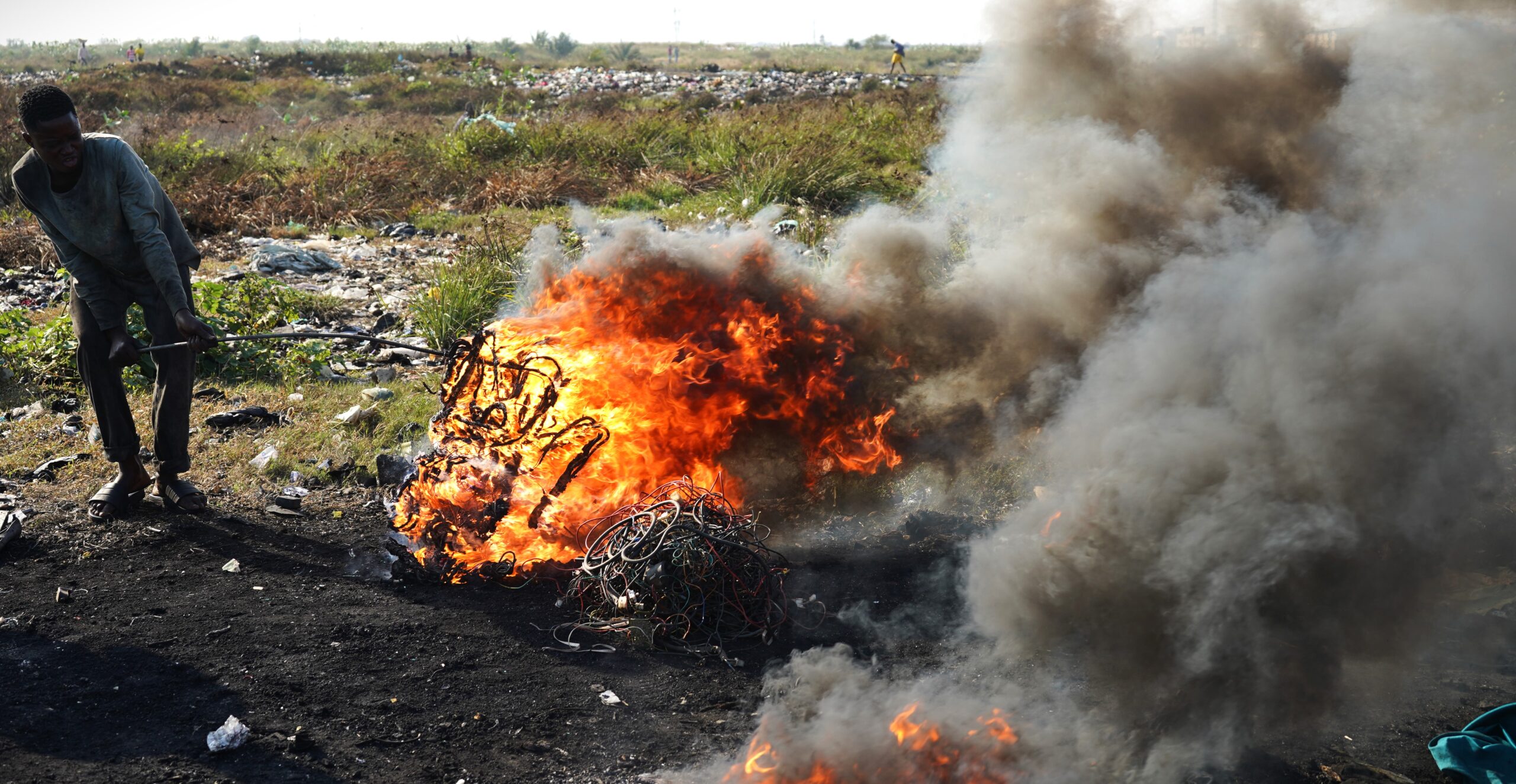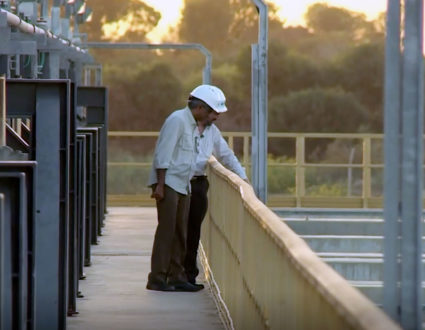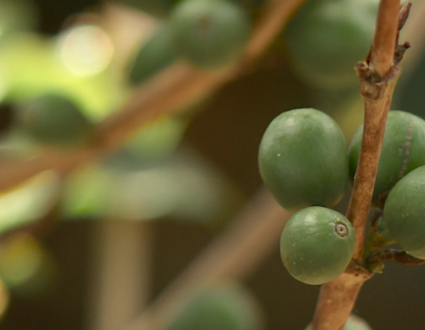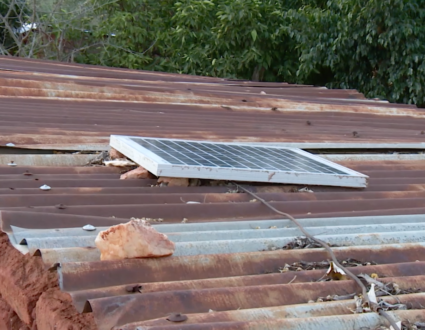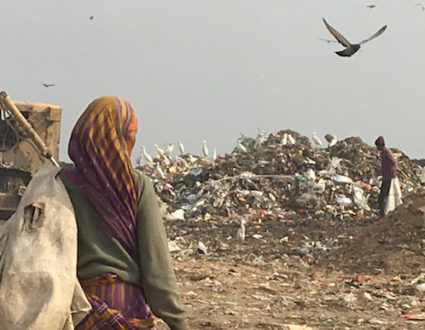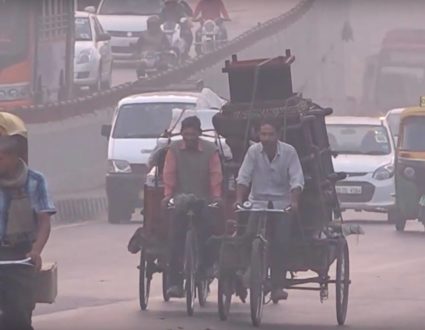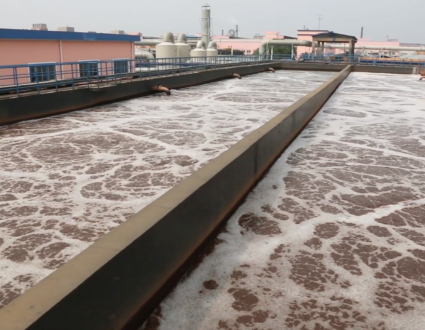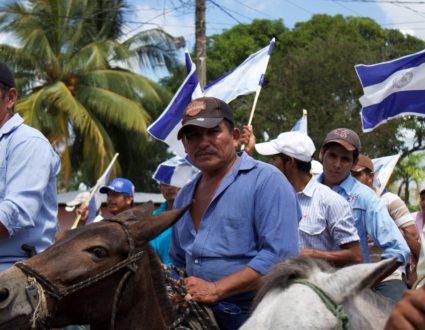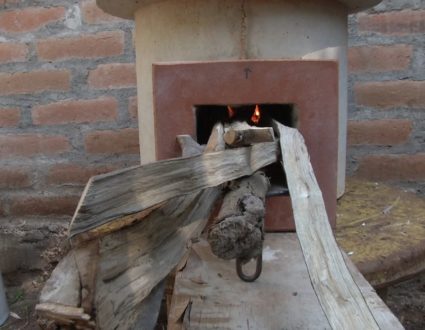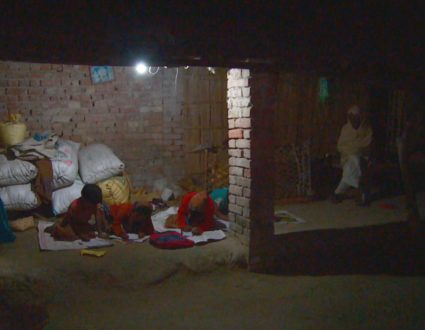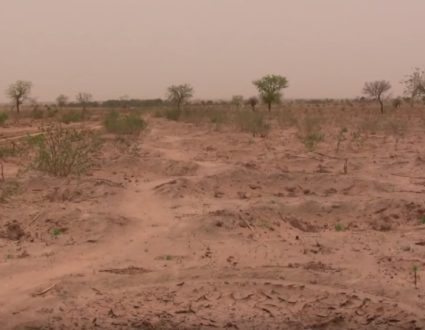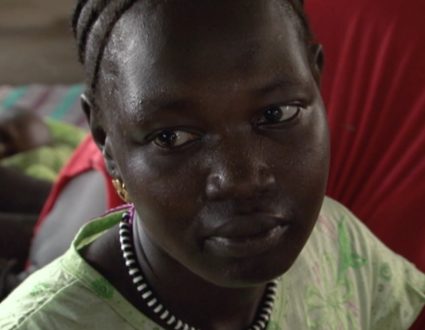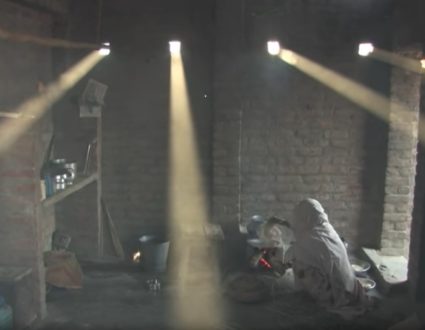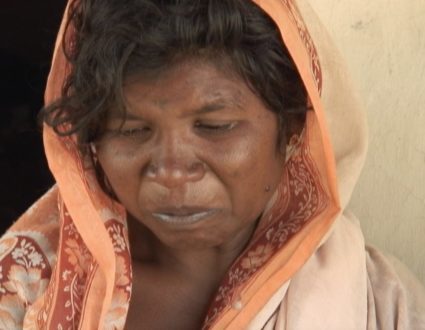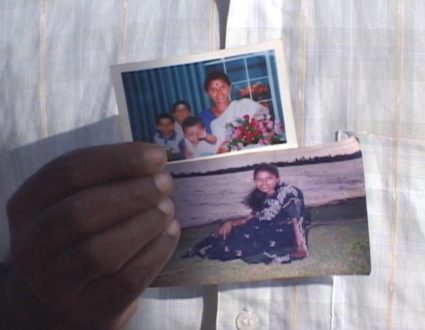- Geoff Bennett:The Inflation Reduction Act includes a number of incentives to companies and individuals to build and buy electric vehicles.For auto manufacturers. Those incentives include sourcing their parts and raw materials domestically. And that presents challenges for some communities, notably in Northern Minnesota, where Fred De Sam Lazaro reports, there has been a rise in permit applications for new mines.
- Fred De Sam Lazaro:From carnival games to the parade down Main Street, the annual Hey Days Festival in Tamarack, population 62, is meant to be fun, a chance for neighbors to get caught up, a chance for kids to pick up candy that is sure to pour out of the parading vehicle.This year, two of those vehicles are all-electric Teslas, each bearing sharply conflicting messages that cut to the heart of the escalating tension in this region over whether to extract nickel, a mineral currently seeing strong demand in the electric vehicle market.Many people in Northern Minnesota proudly boast that it was iron ore extracted from the ground here that the fed America’s steel industry, that built the country, that helped it win two World Wars. The question today is whether this region can play a similar role in the transition to a post-fossil fuel age.Brian Goldner, Chief Exploration and Operations Officer, Talon Metals: So, this is one of the highest samples I have ever seen, and certainly the highest sample I have ever held.
- Fred De Sam Lazaro:Brian Goldner is a geologist for Talon Metals, a mining company that has unearthed samples of high-grade nickel from deep below landed it has leased just north of Tamarack.
- Brian Goldner:These samples run about 9 percent nickel. And to put that into perspective, high-grade nickel is considered to be essentially 1 percent and above.
- Fred De Sam Lazaro:So, this is a big deal?Talon Metals says it already has an agreement to supply Tesla with the nickel from here.
- Todd Malan, Chief External Affairs Officer, Talon Metals:We need a lot more nickel for the transition from a fossil fuel-centered energy system to a mineral-centered energy system.
- Fred De Sam Lazaro:Spokesman Todd Malan says Talon’s 60-acre mine to be built under the ground where we were standing would create more than 400 union jobs.That’s welcome news for Lisa Rudstrom, a former science teacher lifelong resident of an area where the iron ore-based economy has declined in recent decades, along with the domestic steel industry it supplies.Lisa Rudstrom, Better in Our Backyard: The potential I see are new roofs and new sidewalks and new schools and vibrant arts opportunities and vibrant communities, happy people, healthy people.
- Fred De Sam Lazaro:Just how healthy is the key question. Unlike iron mining, extracting nickel ores, which also contain copper, cobalt and platinum, produces acid byproducts. This sulfide mining has a toxic legacy across the world, including mines owned by Rio Tinto, the Anglo-Australian company and joint venture partner here with Talon Metals.
- Todd Malan:There is that legacy and that history that we’re carrying as a burden.
- Fred De Sam Lazaro:But Malan insists things will be different here, an area dotted with its share of Minnesota’s nearly 12,000 lakes.
- Todd Malan:We can take different approaches. We can use innovative approaches. We can design things differently.
- Fred De Sam Lazaro:For example, he says a tunnel-boring machine will lay a pipe that will protect the groundwater table as it drills further down to reach the buried metals. And water pumped out at this deeper level would be contained in steel tankers and treated before being released above ground into nearby waterways.The ores themselves would be loaded inside a sealed building onto covered railcars and transported to a processing site in North Dakota, far from this freshwater-rich area.
- Todd Malan:So it’s not that we have zero impact. It’s that we have ways to mitigate those impacts and protect the things that are the most important, which in this region is water and the flora and fauna that depends on that water.Melanie Benjamin, Chief Executive, Mille Lacs Band of Ojibwe: It’s all just pie-in-the-sky types of statements being made. You can tell me that this is safe, but I don’t believe it at this point.Oh, I love it here.
- Fred De Sam Lazaro:Melanie Benjamin is chief executive of the Mille Lacs Band of Ojibwe. She says the proposed mine would be one more example of extractive industry that has devastated tribal lands. There are some 160,000 abandoned mines on or near native lands in the Western U.S. alone.The Minnesota mine would be close to the tribe’s water source, and Benjamin says it would also threaten the sacred harvest of wild rice that grows in lakes here.
- Melanie Benjamin:We’re talking about our people, our plants, our animals, the water that flows throughout. We do know from all the data that this mining is probably the most toxic mining that there is.
- Tom Anderson, Co-Founder, Tamarack Water Alliance:I remember as a kid walking through here.
- Fred De Sam Lazaro:Among the tribe’s allies in this region are Tom and Lynn Anderson, who live on Round Lake just a few miles from the proposed mine site.
- Tom Anderson:They’re pulling, Talon admits, up to 2.3 million gallons — it’s likely more — out of the mine, and that’s going to have an effect on the aquifers, well levels, lake levels.
- Fred De Sam Lazaro:The Andersons founded a group called the Tamarack Water Alliance. They say that even the exploratory drilling has shown damaging environmental impact.Shanai Matteson, another member of the group, showed us this drone video filmed by a local resident.
- Shanai Matteson, Tamarack Water Alliance:They have what are called sumps, where they put those drilling fluids. The trees nearby, you can start to see that the trees around the sumps are dying. That, to me, really speaks to the danger of this type of mining. It is high-grade nickel, but that’s also high-sulfide.And the interaction between that high sulfide and water and air creates acid.
- Fred De Sam Lazaro:Talon Metals says the trees died because their roots were inadvertently choked under soil dug up to build the sumps. Critics say the cause could be both suffocation and toxic sulfides, noting that the company has not lined the sumps to prevent toxins from seeping into groundwater.
- Todd Malan:We have a loss of less than 30 acres of wetlands.
- Fred De Sam Lazaro:Todd Malan says his company is in compliance with Minnesota regulations and is currently compiling data the critics have demanded, which he says will be disclosed as part of the years-long permitting process.
- Todd Malan:It’s frustrating sometimes to have people not like the legacy approaches and then don’t like the innovative approaches either.
- Al Zdon, Former Newspaper Editor:America’s got a great dilemma.
- Fred De Sam Lazaro:Al Zdon is a former editor of the northern Minnesota newspaper Hibbing Tribune.
- Al Zdon:We need the materials. We don’t want to mine them. So what do we do? Do we export our mining needs to other countries, where they won’t have good environmental standards? Is that a good idea? Is that what America does?
- Fred De Sam Lazaro:Indonesia, the Philippines, and Russia are the world’s top producers of nickel, although the U.S. currently imports most of its needs from Canada, Norway, and Australia. If developed, the Tamarack mine would contribute only a fraction of current U.S. needs.Just what that need will be in the future is another point of contention back in Tamarack in the tale of the two Teslas. While many E.V.s, like the one owned by Talon Metals, use batteries containing nickel, a growing number, including the Tesla owned by mining opponent Lynn Anderson, now use lithium-ion phosphate batteries, which contain no nickel.
- Lynn Anderson, Co-Founder, Tamarack Water Alliance:By the time this mine gets its permits, which could be 10 years, the whole battery industry will be moving on.
- Fred De Sam Lazaro:Talon Metals says nickel will see sustained demand, citing high market prices for it and two federal grants totaling $134 million it has received to help increase domestic production here and in nearby Upper Michigan, where the only operating nickel mine on U.S. soil is expected to be exhausted by 2027.For the “PBS NewsHour,” I’m Fred De Sam Lazaro in Tamarack, Minnesota.
- Geoff Bennett:Fred’s reporting is a partnership with the Under-Told Stories Project at the University of St. Thomas in Minnesota.
New Mining for Minnesota?
A toxic legacy and a green future
The Biden administration is incentivizing auto manufacturers to build electric vehicles and consumers to buy them. For auto manufacturers, that includes incentives for sourcing their parts and raw materials domestically. There’s only one operating nickel mine in the U.S., but a new mine plan in Minnesota claims it can extract the resource with minimal environmental impact. It also promises an economic boost to the region, but some nearby Native communities and local residents are skeptical.


There are more than 12,000 lakes in this region
Todd Malan, Talon Metals
“So it’s not that we have zero impact. It’s that we have ways to mitigate those impacts and protect the things that are the most important, which in this region is water and the flora and fauna that depends on that water.”


Melanie Benjamin, Mille Lacs Band of Ojibwe
“We’re talking about our people, our plants, our animals, the water that flows throughout. We do know from all the data that this mining is probably the most toxic mining that there is.”


